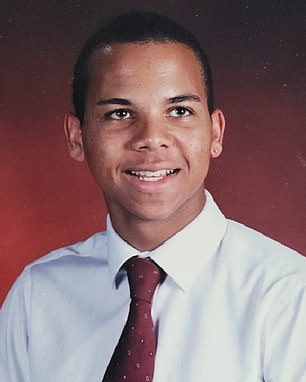
“Passionate, loving, & trustworthy”: The Unforgotten Death of Keith Warren (Part 2)
~~~~~~~~~~~~~~~~~~~~~~~~~~~~~~~~~~~~~~~~~~~~~~~~~~~~~~~~~~~~~~~~~~~~~~~~~~~~~~~~
–
This piece is published in memory of Keith Warren and in honor of his mother, Mary Couey.
–
TW: descriptions of violent death, racism
The Warren family’s world forever changed when they lost their beloved son, 19-year-old Keith Warren.
By all accounts, Keith was a kind, dependable young man with a bright future. According to his sister Sherri, he was his mother and sister’s self-appointed protector.
On July 31, 1986, they lost that protector forever. Keith was found dead in a wooded area near his home in Silver Spring, Maryland, strung up on a tree. His death was immediately classified as a suicide by the police, and his body sent to a funeral home for embalming. His family was left in the dark about the quality of the police investigation for six years, until an envelope of official photos from Keith’s death scene was left on his mother’s doorstep.
His mother Mary Couey spent the rest of her life fighting for transparency in her son’s case. After she died prematurely in 2009, her daughter Sherri immediately stepped up to carry on her legacy.
The story of the Warren family’s fight for truth is long and complicated, and it takes many twists and turns. That’s the Hell that the Montgomery County Police Department created for them in 1986.
It’s cruel of the Montgomery County Police to just stonewall their family like this. We join Sherri’s calls for more transparency and accountability in the role that police misconduct played in Keith’s case.
It happened. We all know it. Let Keith’s remaining family get the closure they’ve been seeking for over 30 years.
We also echo her request to the Medical Examiner’s Office to change Keith’s manner of death from “Suicide” to “Undetermined”. (At the time of publishing this piece, the Medical Examiner’s office has not responded to Sherri’s request).
We’ll leave you with the words of Keith’s mother Mary Couey, who expressed a sentiment similar to that of Mamie Till-Mobley after the murder of her son, Emmett:
“My issue is not your issue today, but continue to ignore my issue, and my issue will one day become yours.”
This interview was originally recorded on June 6, 2023. It has been edited for brevity and clarity. If you missed Part 1, make sure you read it here!
~~~~~~~~~~~~~~~~~~~~~~~~~~~~~~~~~~~~~~~~~~~~~~~~~~~~~~~~~~~~~~~~~~~~~~~~~~~~~~~~
Emma Buchman (Digital Content Director & Blog Editor):
I wanted to follow up: you said that the tree was destroyed in a warehouse fire. Was that a warehouse of evidence and they had kept the tree?
Sherri Warren (Marketing Specialist, Community Advocate, & Sister to Keith Warren):
It was a warehouse/locker, evidence area. They told us the tree got destroyed.
Emma:
I still don’t… why are they cutting down the tree?
Sherri:
I did not connect two and four at the time: I was told he was cutting the tree down to get to the branch. The branch is what was in the locker that got destroyed. But again, there’s no pictures of this branch, there’s no description of this branch. But you’re collecting evidence though?
Whoever’s listening to this, particularly in Montgomery County – I have reached out to John McCarthy [current state’s attorney of Montgomery County], since my mother died 14 years ago. Do you know, he has never acknowledged me? He has never called me back.
He did have one of his assistant state’s attorneys call me, who basically told me that I should go get counseling and get over it. Oh, absolutely. He said, “Yeah, you might want to go talk to somebody.”
This is a justice system in one of the richest counties in the United States, and you can’t simply acknowledge to me that something is very wrong with the death investigation of my brother?
I’m going to keep plucking and keep plucking until I can’t pluck no more. Then, hopefully, somebody else will come behind me. Because that documentary, Uprooted, is not going anywhere. It lives on forever.
Emma:
I’m so glad that you have that documentary, that they put the effort in to make that.
So this question, if you don’t feel comfortable touching on it, that’s totally fine. Do you have your own ideas of what happened to Keith?
~~~~~~~~~~~~~~~~~~~~~~~~~~~~~~~~~~~~~~~~~~~~~~~~~~~~~~~~~~~~~~~~~~~~~~~~~~~~~~~~
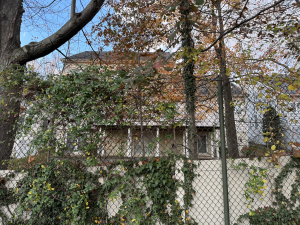

On July 31, 1986, Keith was found dead in a wooded area 500 yards from his home. The exact location of his body was lost when a housing development overtook the wooded area.
~~~~~~~~~~~~~~~~~~~~~~~~~~~~~~~~~~~~~~~~~~~~~~~~~~~~~~~~~~~~~~~~~~~~~~~~~~~~~~~~
Sherri:
…I think maybe he was working [undercover] for the department. Think about it in this respect – Montgomery County has done a lot to ignore me. They’ve done a lot to make this go away. Right? Instead of just saying something is incredibly wrong with this picture.
Maybe he was collateral damage. Maybe it was a message that was being sent to somebody. I don’t know…
Emma:
I wanted to follow up [on] something you told us the first time you came to a C.A.S.T. meeting. It was like [six] years after his death, there was a box left on your front porch?
Sherri:
Oh, those are pictures. That’s how we know his clothing was changed…
On his 25th birthday, we got pictures left on my mom’s doorstep. In the pictures – which Montgomery County has admitted that they’re their pictures, they don’t know how we got ’em – they’re of my brother on the tree. In the pictures, he’s strung up, he’s not hanging down.
I will say this – they are online. My family did not put them online. I don’t know how they got online. They’re not safe for work. So, I would caution you…
But whoever left them, they were trying to help us: because that’s how we knew his clothing was changed. The items that he has on the tree (which we never got back), are not what my mom saw him leave the house in. Those items we never got back, other than the brown construction boots, the blue hoodie jacket, and the Jimi Hendrix hat. We never got back his shirt, pants, or underwear, because we were told there was so much decomposition.
When he left the house on Tuesday, he had a T-shirt, his blue hoodie jacket, his shorts, and his boots. On the tree, he has on this clothing we don’t even recognize. Montgomery County explains that away. The police department says, and they said this to me in every meeting I ever had with them, that the things that I got back were around his body.
Again, I’m trying to figure out, how did the person know to give back the stuff that we would recognize in 1986? Because had we gotten back that stuff on the tree, we would’ve been like, what is this? I know what he used to wear because I used to be in his stuff. I used to go through his pockets.
We would’ve definitely questioned the items that we got back. Wherever my brother died is where they changed his clothes. His clothes were changed, and the pictures that we got back showed he’s strung up, he’s not hanging down. His feet are literally on the ground. The rope was caught up in [the] collar of his shirt. He has leaves on the back of his shirt. He’s hoisted up, he’s not hanging down.
Stevie Wonder can see that there’s a problem with these pictures.
~~~~~~~~~~~~~~~~~~~~~~~~~~~~~~~~~~~~~~~~~~~~~~~~~~~~~~~~~~~~~~~~~~~~~~~~~~~~~~~~
The day my brother’s body was found was the day my mother started losing life. She dedicated her life to this, to trying to bring some sense of closure– just wanting somebody to acknowledge the fact that something very wrong happened to her child.
~~~~~~~~~~~~~~~~~~~~~~~~~~~~~~~~~~~~~~~~~~~~~~~~~~~~~~~~~~~~~~~~~~~~~~~~~~~~~~~~
Again, I’m not pulling this out of [nowhere]. I’m literally telling you factually what I can prove. They can’t. But they keep coming up with the, “’Well… those clothes that you got back were around his body.’”
So my brother changed his clothes before he hung himself? He wanted to be casket sharp? Is that what you’re telling me?
Why weren’t the wine bottles collected? “’Oh, well, again, policy and procedure weren’t adhered to. And that was, you know, in ’86, we’ve since updated…’”
That does nothing for me.
Then I asked the question in 2018, I said, “Show me in a police handbook where it was legal to send a body directly to a funeral home.” Of course, they’re not cooperating – “they” as in the Montgomery County Police Department…
So I did a FOIA/MPIA request. It’s on my website: www.thekeithwarrenjusticesite.com. I was told in writing that there is not one electronic or hard copy of the police policy handbook from 1986. They supposedly update those books every year and once they’re updated, they destroy the old ones.
I want you to show me: where was the policy that a body goes straight from a scene to a funeral home [chosen by] the investigating detective? Show me.
Emma:
It makes no sense. When I tell people about Keith’s story, the thing that I always get the most tripped up on [is] his feet. How they’re touching the ground.
Sherri:
They’re touching the ground. Oh, so this same detective, sorry, let me go back to that – at some point, the same detective who said to me that that was just Beasley and that’s who he was? He also tried to explain to me that the method that Keith used to kill himself was called a “‘slingshot method”. He says it’s a “’very common method’”.
I mean, if you go online, I googled, I couldn’t find it. [Editor’s note: I also googled this and found nothing.]
Supposedly my brother was a mathematician. He was f*cking Einstein: he knew about how much rope to leave to have enough tension that if he dropped to his knees, the rope would snap him back up!
He wasn’t that smart. I can promise you that.
But that’s what they want me to believe: it was called a slingshot method. They have an answer and explanation for everything.
Emma:
Usually the simplest answer is the correct one. Their answers are all discombobulated and stretched. It’s ridiculous.
So you’ve spoken about this a little bit, but what was the impact of Keith’s death on those closest to him?
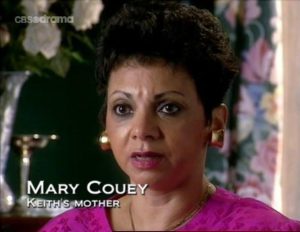
Sherri:
The day my brother’s body was found was the day my mother started losing life…
It totally disrupts the DNA of what you think your life is supposed to be.
As I said, I’m never going to be an aunt. My mother, I’m never going to watch her grow old. She dedicated her life to this, to trying to bring some sense of closure, just trying to get her voice heard – just wanting somebody to acknowledge the fact that something very wrong happened to her child.
It’s upsetting when you sit and you think about the same people who are supposed to protect and serve, who wake up every morning and take this oath and wear this uniform or show a badge, are the same ones who are deliberately trying to keep the truth from you.
I’ve said this in many of my meetings – I wasn’t physically there, right? I can’t for a fact say he didn’t do it.
Chief Jones – you weren’t physically there. Dallas Lipp – who was the first paramedic on-scene, who’s in the documentary – says there was something very wrong with this… The evidence all shows that there’s something very wrong with this case.
What’s bothersome to me is if you’re going to die on this hill, what other cases are we missing? Are you about to open up Pandora’s box? Is this why?
My best friend asked me never to say that, because she was like, “Oh my God, if you come up missing…”
I said, “If I come up missing, y’all better be burning some shit down, because trust and believe it: I ain’t do it to myself.
But yeah – is there a Pandora’s box? Are there other cases out there that y’all don’t want to talk about? Hmm. Makes you want to think.
I done said everything I done told you about my brother’s case that’s factual and I can back it up with evidence and information; and you still want to push back on it?
Emma:
I agree with you… I think that that’s a problem for a lot of police departments. I think that because of the way that our justice system is set up – to be inherently racist – it’s just the way that things work. But they also know that it’s wrong, so when people inquire into it, they’ve done so many things wrong, they just don’t want to admit it.
What were the long-term impacts of Keith’s death on the community?
Sherri:
There wasn’t any because it wasn’t talked about.
The long-term effect is – you have a department that’s trying to hide and bury a dirty little secret that they don’t want out. It’s amazing the number of people that I’ve encountered on this journey that have said they lived or [currently] live in Montgomery County, and never knew this story.
It’s interesting that they push back so hard for this to go away. Thank God for the internet. See, back in ’86, we didn’t have the internet. We didn’t have social media. Thank God it’s free. Thank God I got time and opportunity.
I will continue to do what I do, because it’s not an unrealistic ask. It’s really not. Just have the death certificate reflect the evidence.
I’ve always asked – show me something scientific, something medical, something factual that it’s a suicide and I’ll go away. Show me.
I don’t want to talk about what you think you heard. I said to Chief Jones at the time, “So what you’re telling me is that if I walk up on a scene right now of officers investigating a death, and I go up to the lead detective and I say, ‘Oh, by the way, you know he was a drug dealer’, and I walk away, that’s what you call a good investigation?”
“’Well, no, I’m saying we’ve updated policy and procedure since then.’” Okay, well that don’t help me. Thanks!
Emma:
Not only is it a realistic ask, it’s a perfectly reasonable ask.
The answer to the first part of my question (is Keith’s death resolved?), is no, it’s not resolved. Why is his death unresolved, and who is accountable for it?
Sherri:
His death is unresolved because the system doesn’t want to resolve it.
His death is unresolved because there’s some ugly truths that, clearly, if his death is resolved, will have to come to light.

I don’t know who killed my brother. My mom went to her grave not knowing, but I’m pretty sure she got her answers when she got on the other side. I’m pretty sure Keith was there waiting for her when she showed up.
I’m going to keep saying it: I can’t for a fact say he didn’t do it. Right? But the evidence says he didn’t. Montgomery County, Maryland, you can’t for a fact say he did. So meet me in the middle. That’s it.
Emma:
It’s not that much to ask…
How does Keith’s story fit into the broader story of our current human experience? What larger story does Keith’s story help to tell?
Sherri:
Keith’s story exposes the ugly truth of how young Black men and their deaths were investigated in 1986 through today.
If it were not for social media, cell phone cameras, body cameras from police officers, there still would be a lot of ugly truths that would probably never be seen in the light of day.
The mere fact that I’m still having this conversation in 2023 shows you a system that’s not trying to be just and fair… I’m not asking for the unreachable and unthinkable.
You name the Maryland official, they’ve gotten an email from me. I don’t care what municipality/county you’re from. I can count on one hand how many have actually acknowledged and tried to help me.
For me, it’s a wake up call to show that the justice system is not just – I’m going to say it again – in Maryland, with regard to Keith Warren. I can’t speak for nobody else, I can only speak for Keith Warren and my family.
I’ve never asked for any money. I don’t want an investigation. Let me be very clear: I’ve never asked Montgomery County to reopen this case. I’ve asked [them] to reclassify the case.
You know why? Emma – say, “Sherri, why can’t we reopen the case?”
Emma:
Sherri, why can’t we reopen the case?
Sherri:
Because what’re you going to investigate? I’m not going to waste taxpayers’ dollars on a case that has no evidence.
The lead detective intentionally manipulated documents. If you go back and look at the coroner’s report, there is nothing medical except for some blue blowflies that were around his mouth. That’s all that’s medical.
There’s discrepancies in the dates on the police report and on the coroner’s report. That’s how sloppy they were, because they did not believe that I would still be having this conversation about this case 36 years later.
So the ugly truth, which has to be acknowledged when referencing Keith Warren and Maryland, is that something inherently went wrong with the investigation as to how my brother ended up on a tree.
~~~~~~~~~~~~~~~~~~~~~~~~~~~~~~~~~~~~~~~~~~~~~~~~~~~~~~~~~~~~~~~~~~~~~~~~~~~~~~~~
I want to get to a place of closure with my brother’s case, and then I can continue to help others.
~~~~~~~~~~~~~~~~~~~~~~~~~~~~~~~~~~~~~~~~~~~~~~~~~~~~~~~~~~~~~~~~~~~~~~~~~~~~~~~~
Whether he put himself on a tree or not, we’ll never know. Why? Because your department thought so little of my brother and my mother that they said, “We want this to go away and we’re going to make it go away.”
Because it’s factual that Detective Beasley had my brother’s body embalmed before my mother was notified. My brother’s body was embalmed by 10:00 AM on Friday morning; we didn’t ID my brother’s body until 1:00 PM.
What was the rush to process his body? What was the rush to make [things] go away? What was the rush?
I’m going to sit here until we do right by my family and my mama – accountability for her and justice for Keith.
Emma:
That leads me to my final question: what’s next for you? How are you carrying on Keith’s story?
Sherri:
Well, I’m going to continue to talk about it. I have the Keith Warren Justice Foundation, which is a not-for-profit entity that I developed to help families navigate the judicial system. I use my story on social media to help people understand and use my experience to help their experience.
I also have a petition to the medical examiner’s office. Back in 2003, my mother and her team sent Dr. [David] Fowler – everybody knows who Dr. Fowler was, if you don’t Google him – a 50 page petition asking for my brother’s death certificate to be updated. He never acknowledged nor responded.
So I used that same information and I updated it with my new information. So, I’m waiting to hear back from his office. Thank God for Rev. Marguerite Morris; by the way, please go look up her story. She was a mother who was the only person in the state of Maryland (up until now because I’m going to do the same thing), that had her daughter’s death certificate reversed based off of [new] information. Thanks to her guidance, you know, we’re trudging through.
I want to get to a place of closure with my brother’s case, and then I can continue to help others.
Emma:
That’s a completely reasonable thing to want. We love Rev. Marguerite too.
Well, those were the questions that I had. I just wanted to say, on behalf of March on Foundation, we are very sorry for the loss of your brother. We’re sorry for the loss that your mother suffered and we’re sorry for the loss of your mother as well, and how that was clearly an early death.
We hope that this does a little bit to help continue Keith’s story and your mother’s story in fighting for justice for him…
We honor them and we hope this is just a small way to continue their legacy, so thank you.
Sherri:
Well, I thank you for the opportunity. You’ve given me your platform to continue to talk about Keith’s story.
I’m very active on social media. I might be a little slow sometimes just FYI, but I get onto it, on YouTube and Reddit. There’s a whole bunch of pages that were developed around and because of Keith’s story, and I’m very appreciative of those that are continuing to talk about and [not] do what they thought they were going to do, which was make it go away.
I want people to continue to talk about Keith’s story. I want to continue to expose the truth and maybe help other families out there who may have gone through the same situation.
I don’t think that Keith’s case was isolated. For me, it’s too comfortable in how everything was done. That’s just me, you know, I’m a conspiracy theorist. I sit with my gun on my lap, like Annie Oakley waiting for it.
I’m thankful for the opportunity to continue to talk about Keith’s story. Thank you to March on Maryland for opening up to me to your audience…
~~~~~~~~~~~~~~~~~~~~~~~~~~~~~~~~~~~~~~~~~~~~~~~~~~~~~~~~~~~~~~~~~~~~~~~~~~~~~~~~
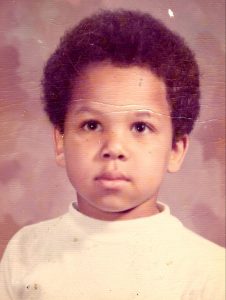
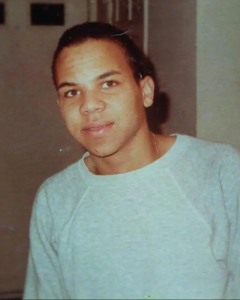
~~~~~~~~~~~~~~~~~~~~~~~~~~~~~~~~~~~~~~~~~~~~~~~~~~~~~~~~~~~~~~~~~~~~~~~~~~~~~~~~
If you have a loved one who didn’t get to finish their story, please feel free to email our editor: emma@mo-foundation.org.